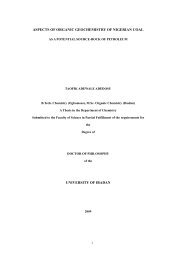- Page 2 and 3:
UNIVERSITY OF IBADAN., THIS DISSERT
- Page 4 and 5: DEDICATIONThis thesis is dedicated
- Page 6 and 7: ACKNOWLEDGMENTI would like to expre
- Page 8 and 9: Prof. 0 Tomori, the staff of WHO na
- Page 10 and 11: KFDKUNLIMAC-ELISAMHCmRNAMAFMVENANKV
- Page 12 and 13: Title of DissertationTABLE OF CONTE
- Page 15 and 16: 3.4.6 Enzyme immuno assay for the d
- Page 17 and 18: xv4.3.3 Gender distribution of pati
- Page 19 and 20: 24 A table showing the level ofcros
- Page 21 and 22: ABSTRACTDengue viruses (DENs) and W
- Page 23 and 24: 1.1 INTRODUCTIONCHAPTER ONEArboviru
- Page 25 and 26: CHAPTER TWO2.0 LITERATURE REVIEW2.1
- Page 27 and 28: TABLE 1: MEMBERS OF THE FLAVIVIRIDA
- Page 29 and 30: approximately 1O.5kb. Virions conta
- Page 31 and 32: precludes infection by the oral rou
- Page 33 and 34: extracellular virions respectively.
- Page 35 and 36: complex- specific and group- reacti
- Page 37 and 38: cleavage at the NS1/2A site, but th
- Page 39 and 40: dispersal of Flaviviruses could be
- Page 41 and 42: threshold. The time interval betwee
- Page 43 and 44: that, in susceptible vertebrate cel
- Page 45 and 46: 2.3.1RECOMBINATION OF GENETIC MATER
- Page 47 and 48: ., by capillary leakage, thrombocyt
- Page 49 and 50: v »infected cells. Also, lysis or
- Page 51 and 52: its first major epidemic of dengue
- Page 53: sporadic outbreaks (CDC, 2001). In
- Page 57 and 58: immune responses by eliciting neutr
- Page 59 and 60: hydrophilicity and antigenicity. Ho
- Page 61 and 62: 392.3.9 HOST GENETIC FACTORS THAT M
- Page 63 and 64: 2.3.12 TREATMENT OF DENGUE VIRUS IN
- Page 65 and 66: heterogeneity among strains isolate
- Page 67 and 68: 45Dogs are susceptible to infection
- Page 69 and 70: 48where 22% of children and 61% of
- Page 71 and 72: Experimental inoculation of pregnan
- Page 73 and 74: sonicated prior to inoculation. The
- Page 75 and 76: encoding the prM and E proteins wit
- Page 77 and 78: 56template yields full-length messe
- Page 79 and 80: 58TABLE 2: THE ECOLOGICAL ZONES IN
- Page 81 and 82: 3.3 SERUM SAMPLES COLLECTION:About
- Page 83 and 84: 3.4 SEROLOGYThe IgM capture ELlSA (
- Page 85 and 86: aliquoted in lml amount in cryovial
- Page 87 and 88: covered and incubated overnight at
- Page 89 and 90: 3.4.5.2 DILUTION METHODOne of these
- Page 91 and 92: environment. Aedes aegypti has been
- Page 93 and 94: 3.5.5 VIRUS ISOLATION FROM FIELD-CA
- Page 95 and 96: color was obtained. Flask that beca
- Page 97 and 98: a) The extraction of RNA from the c
- Page 99 and 100: 3.6.2.3.3 Mixture of reactants for
- Page 101 and 102: Condition of amplification:I Cycle
- Page 103 and 104: 3.6.3 REVERSE-TRANSCRIPTION POLYMER
- Page 105 and 106:
833.6.3.3 The procedure of RT-PCR f
- Page 107 and 108:
3.6.4 IDENTIFICATION OF AMPLIFICATI
- Page 109 and 110:
"r~-TABLE 7: TITRATION or ANTIGEN A
- Page 111 and 112:
TABLE 8: TITRATION OF ANTIGEN AND M
- Page 113 and 114:
4.2 PATTER."I OF DENGUE VIRUS INFEC
- Page 115 and 116:
TABLE 10: DENGUE VIRUS INFECTIONS I
- Page 117 and 118:
4.2.2 SEASONAL DISTRIBUTION OF DENG
- Page 119 and 120:
tD SEASON (SEPTTODECEMBER) --',19%H
- Page 121 and 122:
4.23 AGE DISTRIBUTION OF PATIENTS W
- Page 123 and 124:
4.2.4 GENDER DISTRIBUTION OF I'ATIE
- Page 125 and 126:
4.2.5 THE PREVALENCE OF DEN JgG ANT
- Page 127 and 128:
90 r-----------------------~-------
- Page 129 and 130:
4.3 IgM CAPTURE ELlSA FOR WEST NiLE
- Page 131 and 132:
10.90.80.7(/lW;:)...J~ 0.5ci 0.400.
- Page 133 and 134:
TABLE 18:SEASONAL PATTERN OF WNV Ig
- Page 135 and 136:
TABLE 19: MONTHLY DISTRIBUTION OF W
- Page 137 and 138:
TABLE 20: AGE DISTRIBUTION OF WNV I
- Page 139 and 140:
TABLE 21:GENDER DISTRIIlUTION OF WN
- Page 141 and 142:
TABLE 22: THE PREVALENCE OF WNV IgG
- Page 143 and 144:
4.4. THE PREVALENCE OF YELLOW FEVER
- Page 145 and 146:
COLD HARMATTANSEASON35%HOT DRY SEAS
- Page 147 and 148:
.._-~._--TABLE 24: SHOWING THE LEVr
- Page 149 and 150:
1~74.7 DILUTION OF DEN POSITIVE IgM
- Page 151 and 152:
4.8 VECTOlUAL STUDIES ON MOSQUITO V
- Page 153 and 154:
:.~. , ,, ,'\"i,,~;"'~'.,0,';i~! ,.
- Page 155 and 156:
--_._-~._,--_._-------TABLE 26: THE
- Page 157 and 158:
Figure 12: SEMI NESTED peR WITH AED
- Page 159 and 160:
4.8.2.2 RT·PCR FOR WNV IN CULEX MO
- Page 161 and 162:
139, '"i., ',"Figure 15:RT-PCR ON C
- Page 163 and 164:
"Figure 16; RT-rcn ON WNV POSITIVE
- Page 165 and 166:
CHAPTER FIVE5.0 DISCUSSION AND CONC
- Page 167 and 168:
antibody positive hy MAC-ELlSA on a
- Page 169 and 170:
elationship between the prevalence
- Page 171 and 172:
status (that is having previous den
- Page 173 and 174:
WNV RNA were C~ll[;htprcdomiuan.ly
- Page 175 and 176:
patient is not uncommon if it could
- Page 177 and 178:
eports (Gublcr 1997, 1998b), which
- Page 179 and 180:
detection is a serologic method tha
- Page 181 and 182:
November. This is because mosquito
- Page 183 and 184:
Ben-Nathan, D. and Feuerstein, G. (
- Page 185 and 186:
Cantilc, c. Di Guardo, G. E.; Leni,
- Page 187 and 188:
--~------.,Chomczynski, P. and Sacc
- Page 189 and 190:
Edelman, R.; Wasserman, S. S.; Bodi
- Page 191 and 192:
Gannendia, A.E.; Van kruningen, HJ.
- Page 193 and 194:
Gubler, D. Iand'Irent, D.W.(1994):
- Page 195 and 196:
Hammon , W. McD.( 1969): Observatio
- Page 197 and 198:
Innis., B.L.; Nisalak, A; Nimmannit
- Page 199 and 200:
Koonin, E. V. (1993;): Computer-ass
- Page 201 and 202:
179Leitmeyer, K. C.; Vaughn, D. W.;
- Page 203 and 204:
Marberg, K; Goldblum, N.; Sterk, V.
- Page 205 and 206:
Monath T P (1994) Dengue: the risk
- Page 207 and 208:
Paradoa, Preze. M. 1.; TrujiIlo, Y.
- Page 209 and 210:
Rice, C. M.and Strauss, J. H. (1990
- Page 211 and 212:
Shi, P.Y.; Kanfman, E.B.; Ren, P.;
- Page 213 and 214:
Sumiyoshi, H.; Tignor, G. H. and Sh
- Page 215 and 216:
infection with some arboviruses. Tr
- Page 217 and 218:
Webster, L.T. (1993): Inherited and
- Page 219 and 220:
APPENDI X I:INOCULATION OF MICE WIT
- Page 221 and 222:
APPENDIX 2PREPARATION OF REAGENTS1.
- Page 223 and 224:
•17. Preparation of PrimersPrimer
- Page 225:
APPENDIX 4IgM EUSA RESULTS AFTER Ti


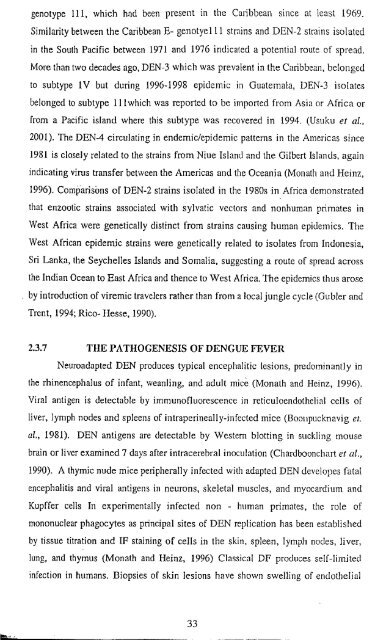

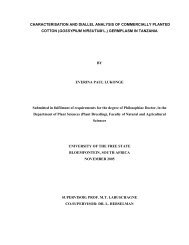

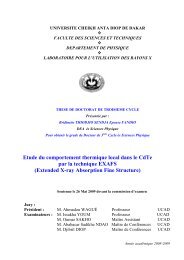
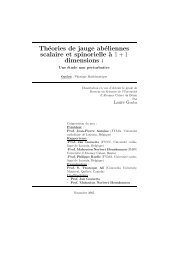
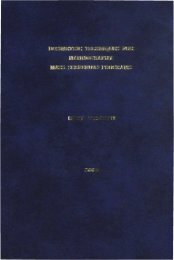

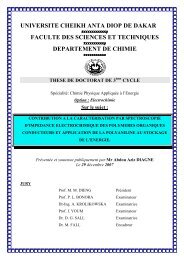
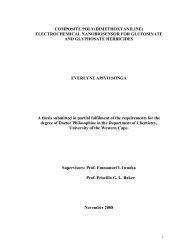


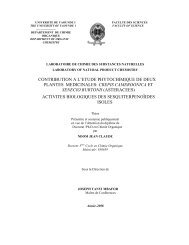
![SYNTHESIS AND ANTI-HIV ACTIVITY OF [d4U]-SPACER-[HI-236 ...](https://img.yumpu.com/30883288/1/190x245/synthesis-and-anti-hiv-activity-of-d4u-spacer-hi-236-.jpg?quality=85)
